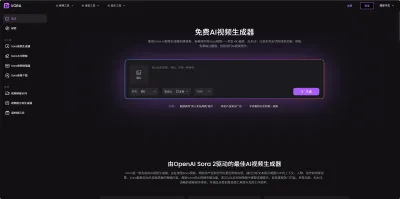ML Papers Explained
Explanations to key concepts in ML
Language Models
| Paper | Date | Description |
|---|---|---|
| Transformer | June 2017 | An Encoder Decoder model, that introduced multihead attention mechanism for language translation task. |
| Elmo | February 2018 | Deep contextualized word representations that captures both intricate aspects of word usage and contextual variations across language contexts. |
| Marian MT | April 2018 | A Neural Machine Translation framework written entirely in C++ with minimal dependencies, designed for high training and translation speed. |
| GPT | June 2018 | A Decoder only transformer which is autoregressively pretrained and then finetuned for specific downstream tasks using task-aware input transformations. |
| BERT | October 2018 | Introduced pre-training for Encoder Transformers. Uses unified architecture across different tasks. |
| Transformer XL | January 2019 | Extends the original Transformer model to handle longer sequences of text by introducing recurrence into the self-attention mechanism. |
| XLM | January 2019 | Proposes two methods to learn cross-lingual language models (XLMs): one unsupervised that only relies on monolingual data, and one supervised that leverages parallel data with a new cross-lingual language model objective. |
| GPT 2 | February 2019 | Demonstrates that language models begin to learn various language processing tasks without any explicit supervision. |
| Sparse Transformer | April 2019 | Introduced sparse factorizations of the attention matrix to reduce the time and memory consumption to O(n√ n) in terms of sequence lengths. |
| UniLM | May 2019 | Utilizes a shared Transformer network and specific self-attention masks to excel in both language understanding and generation tasks. |
| XLNet | June 2019 | Extension of the Transformer-XL, pre-trained using a new method that combines ideas from AR and AE objectives. |
| RoBERTa | July 2019 | Built upon BERT, by carefully optimizing hyperparameters and training data size to improve performance on various language tasks . |
| Sentence BERT | August 2019 | A modification of BERT that uses siamese and triplet network structures to derive sentence embeddings that can be compared using cosine-similarity. |
| CTRL | September 2019 | A 1.63B language model that can generate text conditioned on control codes that govern style, content, and task-specific behavior, allowing for more explicit control over text generation. |
| Tiny BERT | September 2019 | Uses attention transfer, and task specific distillation for distilling BERT. |
| ALBERT | September 2019 | Presents certain parameter reduction techniques to lower memory consumption and increase the training speed of BERT. |
| Distil BERT | October 2019 | Distills BERT on very large batches leveraging gradient accumulation, using dynamic masking and without the next sentence prediction objective. |
| T5 | October 2019 | A unified encoder-decoder framework that converts all text-based language problems into a text-to-text format. |
| BART | October 2019 | An Encoder-Decoder pretrained to reconstruct the original text from corrupted versions of it. |
| XLM-Roberta | November 2019 | A multilingual masked language model pre-trained on text in 100 languages, shows that pretraining multilingual language models at scale leads to significant performance gains for a wide range of crosslingual transfer tasks. |
| XLM-Roberta | November 2019 | A multilingual masked language model pre-trained on text in 100 languages, shows that pretraining multilingual language models at scale leads to significant performance gains for a wide range of crosslingual transfer tasks. |
| Pegasus | December 2019 | A self-supervised pre-training objective for abstractive text summarization, proposes removing/masking important sentences from an input document and generating them together as one output sequence. |
| Reformer | January 2020 | Improves the efficiency of Transformers by replacing dot-product attention with locality-sensitive hashing (O(Llog L) complexity), using reversible residual layers to store activations only once, and splitting feed-forward layer activations into chunks, allowing it to perform on par with Transformer models while being much more memory-efficient and faster on long sequences. |
| mBART | January 2020 | A multilingual sequence-to-sequence denoising auto-encoder that pre-trains a complete autoregressive model on large-scale monolingual corpora across many languages using the BART objective, achieving significant performance gains in machine translation tasks. |
| UniLMv2 | February 2020 | Utilizes a pseudo-masked language model (PMLM) for both autoencoding and partially autoregressive language modeling tasks,significantly advancing the capabilities of language models in diverse NLP tasks. |
| ELECTRA | March 2020 | Proposes a sample-efficient pre-training task called replaced token detection, which corrupts input by replacing some tokens with plausible alternatives and trains a discriminative model to predict whether each token was replaced or no. |
| FastBERT | April 2020 | A speed-tunable encoder with adaptive inference time having branches at each transformer output to enable early outputs. |
| MobileBERT | April 2020 | Compressed and faster version of the BERT, featuring bottleneck structures, optimized attention mechanisms, and knowledge transfer. |
| Longformer | April 2020 | Introduces a linearly scalable attention mechanism, allowing handling texts of exteded length. |
| GPT 3 | May 2020 | Demonstrates that scaling up language models greatly improves task-agnostic, few-shot performance. |
| DeBERTa | June 2020 | Enhances BERT and RoBERTa through disentangled attention mechanisms, an enhanced mask decoder, and virtual adversarial training. |
| DeBERTa v2 | June 2020 | Enhanced version of the DeBERTa featuring a new vocabulary, nGiE integration, optimized attention mechanisms, additional model sizes, and improved tokenization. |
| T5 v1.1 | July 2020 | An enhanced version of the original T5 model, featuring improvements such as GEGLU activation, no dropout in pre-training, exclusive pre-training on C4, no parameter sharing between embedding and classifier layers. |
| mT5 | October 2020 | A multilingual variant of T5 based on T5 v1.1, pre-trained on a new Common Crawl-based dataset covering 101 languages (mC4). |
| Codex | July 2021 | A GPT language model finetuned on publicly available code from GitHub. |
| FLAN | September 2021 | An instruction-tuned language model developed through finetuning on various NLP datasets described by natural language instructions. |
| T0 | October 2021 | A fine tuned encoder-decoder model on a multitask mixture covering a wide variety of tasks, attaining strong zero-shot performance on several standard datasets. |
| DeBERTa V3 | November 2021 | Enhances the DeBERTa architecture by introducing replaced token detection (RTD) instead of mask language modeling (MLM), along with a novel gradient-disentangled embedding sharing method, exhibiting superior performance across various natural language understanding tasks. |
| WebGPT | December 2021 | A fine-tuned GPT-3 model utilizing text-based web browsing, trained via imitation learning and human feedback, enhancing its ability to answer long-form questions with factual accuracy. |
| Gopher | December 2021 | Provides a comprehensive analysis of the performance of various Transformer models across different scales upto 280B on 152 tasks. |
| LaMDA | January 2022 | Transformer based models specialized for dialog, which are pre-trained on public dialog data and web text. |
| Instruct GPT | March 2022 | Fine-tuned GPT using supervised learning (instruction tuning) and reinforcement learning from human feedback to align with user intent. |
| CodeGen | March 2022 | An LLM trained for program synthesis using input-output examples and natural language descriptions. |
| Chinchilla | March 2022 | Investigated the optimal model size and number of tokens for training a transformer LLM within a given compute budget (Scaling Laws). |
| PaLM | April 2022 | A 540-B parameter, densely activated, Transformer, trained using Pathways, (ML system that enables highly efficient training across multiple TPU Pods). |
| GPT-NeoX-20B | April 2022 | An autoregressive LLM trained on the Pile, and the largest dense model that had publicly available weights at the time of submission. |
| OPT | May 2022 | A suite of decoder-only pre-trained transformers with parameter ranges from 125M to 175B. OPT-175B being comparable to GPT-3. |
| Flan T5, Flan PaLM | October 2022 | Explores instruction fine tuning with a particular focus on scaling the number of tasks, scaling the model size, and fine tuning on chain-of-thought data. |
| BLOOM | November 2022 | A 176B-parameter open-access decoder-only transformer, collaboratively developed by hundreds of researchers, aiming to democratize LLM technology. |
| BLOOMZ, mT0 | November 2022 | Applies Multitask prompted fine tuning to the pretrained multilingual models on English tasks with English prompts to attain task generalization to non-English languages that appear only in the pretraining corpus. |
| Galactica | November 2022 | An LLM trained on scientific data thus specializing in scientific knowledge. |
| ChatGPT | November 2022 | An interactive model designed to engage in conversations, built on top of GPT 3.5. |
| Self Instruct | December 2022 | A framework for improving the instruction-following capabilities of pretrained language models by bootstrapping off their own generations. |
| LLaMA | February 2023 | A collection of foundation LLMs by Meta ranging from 7B to 65B parameters, trained using publicly available datasets exclusively. |
| Toolformer | February 2023 | An LLM trained to decide which APIs to call, when to call them, what arguments to pass, and how to best incorporate the results into future token prediction. |
| Alpaca | March 2023 | A fine-tuned LLaMA 7B model, trained on instruction-following demonstrations generated in the style of self-instruct using text-davinci-003. |
| GPT 4 | March 2023 | A multimodal transformer model pre-trained to predict the next token in a document, which can accept image and text inputs and produce text outputs. |
| Vicuna | March 2023 | A 13B LLaMA chatbot fine tuned on user-shared conversations collected from ShareGPT, capable of generating more detailed and well-structured answers compared to Alpaca. |
| BloombergGPT | March 2023 | A 50B language model train on general purpose and domain specific data to support a wide range of tasks within the financial industry. |
编辑推荐精选


Vora
免费创建高清无水印Sora视频
Vora是一个免费创建高清无水印Sora视频的AI工具


Refly.AI
最适合小白的AI自动化工作流平台
无需编码,轻松生成可复用、可变现的AI自动化工作流


酷表ChatExcel
大模型驱动的Excel数据处理工具
基于大模型交互的表格处理系统,允许用户通过对话方式完成数据整理和可视化分析。系统采用机器学习算法解析用户指令,自动执行排序、公式计算和数据透视等操作,支持多种文件格式导入导出。数据处理响应速度保持在0.8秒以内,支持超过100万行数据的即时分析。


TRAE编程
AI辅助编程,代码自动修复
Trae是一种自适应的集成开发环境(IDE),通过自动化和多元协作改变开发流程。利用Trae,团队能够更快速、精确地编写和部署代码,从而提高编程效率和项目交付速度。Trae具备上下文感知和代码自动完成功能,是提升开发效率的理想工具。


AIWritePaper论文写作
AI论文写作指导平台
AIWritePaper论文写作是一站式AI论文写作辅助工具,简化了选题、文献检索至论文撰写的整个过程。通过简单设定,平台可快速生成高质量论文大纲和全文,配合图表、参考文献等一应俱全,同时提供开题报告和答辩PPT等增值服务,保障数据安全,有效提升写作效率和论文质量。


博思AIPPT
AI一键生成PPT,就用博思AIPPT!
博思AIPPT,新一代的AI生成PPT平台,支持智能生成PPT、AI美化PPT、文本&链接生成PPT、导入Word/PDF/Markdown文档生成PPT等,内置海量精美PPT模板,涵盖商务、教育、科技等不同风格,同时针对每个页面提供多种版式,一键自适应切换,完美适配各种办公场景。


潮际好麦
AI赋能电商视觉革命,一站式智能商拍平台
潮际好麦深耕服装行业,是国内AI试衣效果最好的软件。使用先进AIGC能力为电商卖家批量提供优质的、低成本的商拍图。合作品牌有Shein、Lazada、安踏、百丽等65个国内外头部品牌,以及国内10万+淘宝、天猫、京东等主流平台的品牌商家,为卖家节省将近85%的出图成本,提升约3倍出图效率,让品牌能够快速上架。


iTerms
企业专属的AI法律顾问
iTerms是法大大集团旗下法律子品牌,基于最先进的大语言模型(LLM)、专业的法律知识库和强大的智能体架构,帮助企业扫清合规障碍,筑牢风控防线,成为您企业专属的AI法律顾问。


SimilarWeb流量提升
稳定高效的流量提升解决方案,助力品牌曝光
稳定高效的流量提升解决方案,助力品牌曝光


Sora2视频免费生成
最新版Sora2模型免费使用,一键生成无水印视频
最新版Sora2模型免费使用,一键生成无水印视频
推荐工具精选
AI云服务特惠
懂AI专属折扣关注微信公众号
最新AI工具、AI资讯
独家AI资源、AI项目落地

微信扫一扫关注公众号






